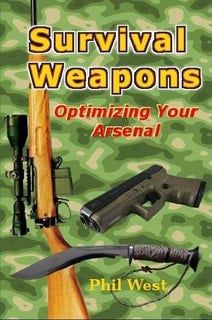By the Author of the Scrapboard : | |
|---|---|
 | Attack, Avoid, Survive: Essential Principles of Self Defence Available in Handy A5 and US Trade Formats. |
 | |
 | Crash Combat Fourth Edition Epub edition Fourth Edition. |
 | |
 | |
One of the more successful campaigns of the Vietnam war was the riverine operations in the Mekong delta. By gaining control of the rivers, which were the main communication routes of the area, US forces prevented re-supply and movement of VC forces. In many other countries rivers also form a major part of the communication system. Securing such systems will depend on the numbers and quality of combat river craft.
Work horse of the riverine forces in Vietnam was the River Patrol Boat or PBR. Although a hastily adapted civilian vessel this proved to have many useful features:
In short, the PBRs were versatile, fast, hard to hit and heavily armed.
They were not without their faults, however.
Weapons positions were rather exposed, particularly if fire was coming from more than one quadrant.
Boats often had to operate close to the bank, and there was a large area of open deck that could catch hand grenades. Gunwales prevented these being easily kicked over the side and trapped the blast.
These features undoubtedly contributed to the fact that one in three crewmen was likely to be killed or injured during a tour of duty.
Future PBR boats should have enclosed weapons’ positions, probably mounting turrets developed for APCs and IFVs.
Open areas of deck should be protected by sloped awnings, chicken-wire and bar-armour cages.
The above suggestions apply to any boat adapted to military service.
What features would be desirable on a custom designed vessel? I'm no sailor but offer the following ideas for discussion:
PBRs were used for patrols and to transport small numbers of infantry.
They were supplemented in this role by the PCF Swift boats, which were larger inshore vessels that could also be operated on river systems.
For larger scale operations against strongholds, naval beach landing craft were used to carry larger numbers of troops. These vessels were rather slow and clumsy and in more recent times some of their roles for beach assaults have been taken over by hovercraft. This could also be done for river assaults if troop carrying hovercraft small enough to operate on river systems are available.
River bank troop landings were supported at close range by “monitors”: armoured landing craft that replaced the troop-carrying area with weapon turrets and a rounded bow.
The monitors were armed with 40mm cannon and a wide range of smaller weapons such as machine guns and 20mm cannon.
Although this was a potent armament, it was often not sufficient to breech VC bunkers.
Future monitors should mount tank-guns or large-calibre gun-mortars or artillery. It is possible that surplus tank-turrets could be used.
Modern monitors would also prove useful during a beach assault, and should be designed to make them capable of operating on both the sea and river systems.
Features such as retractable keels may be fitted.
A very potent and versatile weapon system for any watercraft would be a high pressure waterjet.
In my article on pocket corvettes, I suggest that vessels of this type would find numerous uses if they had a smaller boat ready for launch at short notice.
Missions would include boarding and inspection of intercepted vessels and investigation or transport through areas too shallow for the larger ship.
Carlton Meyer has suggested that such smaller vessels may have a very useful defensive role in waters where the parent vessel may be vulnerable to midget submarines, frogmen or attacks by small boats.
To fullfil this role effectively, their armament will need to include weapons such as 30mm ASP or M230 cannon and ATGWs that can rapidly destroy fast-moving targets.
Other missions may involve the launch coming under fire, so some level of armour protection is desirable.
The improved PBR boat proposed above might also therefore prove to be a useful vessel in coastal or open waters.
Vessels such as the LCP Class, USMC's Riverine Assault Craft or the VT Logistic Support Boat, (a stablemate of the Seatruck) give us some idea as to what an unarmed and armoured version of such a boat might look like, and confirms that it is practical to have a hull that works well in both river and sea conditions.
For more information on riverine operations, readers are directed to:By the Author of the Scrapboard : | |
|---|---|
 | Attack, Avoid, Survive: Essential Principles of Self Defence Available in Handy A5 and US Trade Formats. |
 | |
 | Crash Combat Fourth Edition Epub edition Fourth Edition. |
 | |
 | |